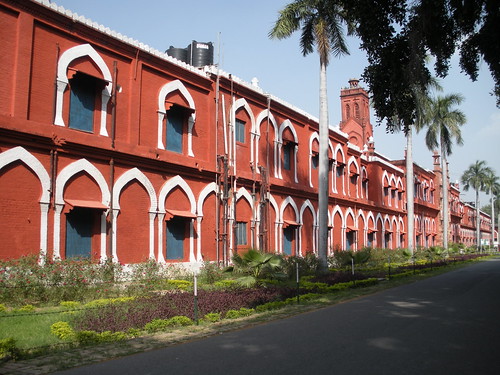By Mumtaz Alam Falahi, TwoCircles.net,
New Delhi: Can Aligarh Muslim University work as a body – or formulate some mechanism – to streamline, control and monitor madrasas in the country, in place of the Central Government’s proposed Central Madrasa Board? It is neither infeasible nor extraneous as far as strong relations between AMU and madrasas and powers and duties entrusted with the university in the 1920 AMU Act are concerned.
AMU Vice Chancellor Professor P K Abdul Azis last week set up a seven-member committee to look into the possibility if the university can play a role of a central body for madrasas in the country. The move is important because the overwhelming majority of the Muslim community, Ulema and leaders have strongly opposed the central government proposal for a central madrasa board, citing it as an attempt to interfere in madrasa system including syllabus. The AMU move is backed by the sympathetic and positive attitude of the Muslim community that the university today is enjoying.

The committee headed by Professor Mohammad Saud Alam Qasmi, Dean, Faculty of Theology, AMU, will soon hold its first meeting to discuss the issue. “We will be meeting in a day or two,” Prof Qasmi told TwoCircles.net on the sidelines of the Fiqh Academy seminar yesterday in New Delhi. The committee has heads of departments like Shia Theology, Sunni Theology, Islamic Studies etc.
It is learnt that the VC has set up the committee on the suggestion of late Prof Iqbal Ansari, former professor of AMU and eminent human rights writer and activist. On October 12, 2009, a day before his death, Prof Ansari had written a letter to the VC pointing out the provision in the AMU Act 1920. He had said that the Section 5.2 (C) of the AMU Act 1920 empowers AMU to take action for educational empowerment of the Muslim community, apart from working as a university.

“The law says that AMU should guide the community in the field of education and that was the leading part of the Aligarh Movement. Though other aspects of the movement were trashed, this part was any how incorporated in the law,” says senior journalist AU Asif.
What could make the task easy for AMU is the fact that more than 50 big madrasas are already recognized by the university – their degrees are accepted by AMU, on the ground of which madrasa students continue their higher education at the university. The madrasas recognized by AMU include Darul Uloom Deoband, Nadwatul Ulema, Jamiatul Falah and Madrasa Salafia Banaras and Madrasa Ashrafia Mubarakpur. It is evident from the list that madrasas of different affiliations – barelvi, deobandi, salafi – are already close to the AMU.
However, it is to be seen if AMU mechanism will be acceptable to all, and if the Central Government will allow AMU to do it.

